Looking for a Garmin watch that blends daily health tracking, serious training tools, and true smartwatch convenience? This Garmin Venu 4 review breaks down what is new, what is better, and what is still missing. The Venu line has always targeted people who want performance without the tactical look.
The Venu 4 doubles down on that goal with a sleeker build, a built-in flashlight, and smarter health features like ECG and a new lifestyle logging system that ties your habits to sleep and recovery.
Below you will find practical insights on design, tracking, accuracy, battery life, and whether it is the right pick for you.
Is Garmin Venu 4 Worth the Upgrade? A Detailed Review and Comparison to the Venu 3
Design and Build Quality
The Garmin Venu 4 keeps the lifestyle-first look of the series, with cleaner lines and a thinner profile than Garmin’s outdoor-focused models. It is designed to fit in at work, in the gym, and on a run, without looking like a rugged tool watch.
- Two case sizes: 41 mm and 45 mm
- Thickness: 12 mm for both sizes
- Weight: 33 g (41 mm), 38 g (45 mm)
- Price at launch: $550 for both sizes
To check the current price and different colors, view the Garmin Venu 4 on Amazon.
Overview of Sizes and Style
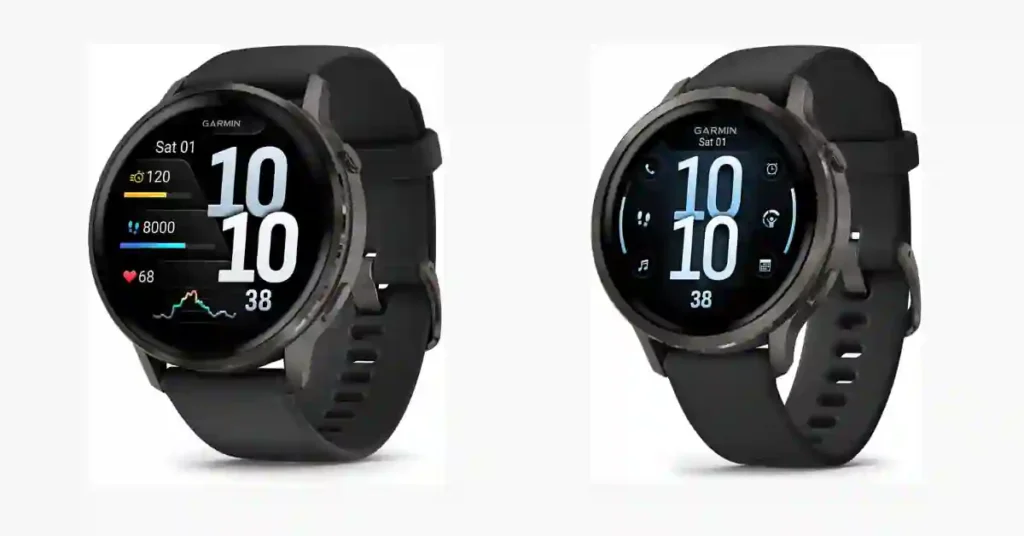
The Venu 4 comes in 41 mm and 45 mm, both smaller and slimmer than large multisport watches like the Fenix series. The 45 mm version shown in the video sits flat on the wrist and wears light.
The Venu line mixes sports watch features with smartwatch and fitness tracker convenience, so it feels at home in daily life rather than only on a trail run.
It returns to a classic round case after a recent rectangular Venu variant, and the result looks clean, simple, and modern. It is elegant, not rugged like the Fenix.
Both sizes are 12 mm thick, the same as Venu 3 and Venu 3S, which helps with comfort under sleeves and during sleep.
Weight and Comfort
At 33 g or 38 g, this is one of Garmin’s lightest full-featured watches. The strap and case contour well, so it stays put without needing to be tight.
- Slim profile for all-day wear
- Lighter than many sports watches
- Feels more premium than the plastic-heavy Venu 3
Materials and Durability
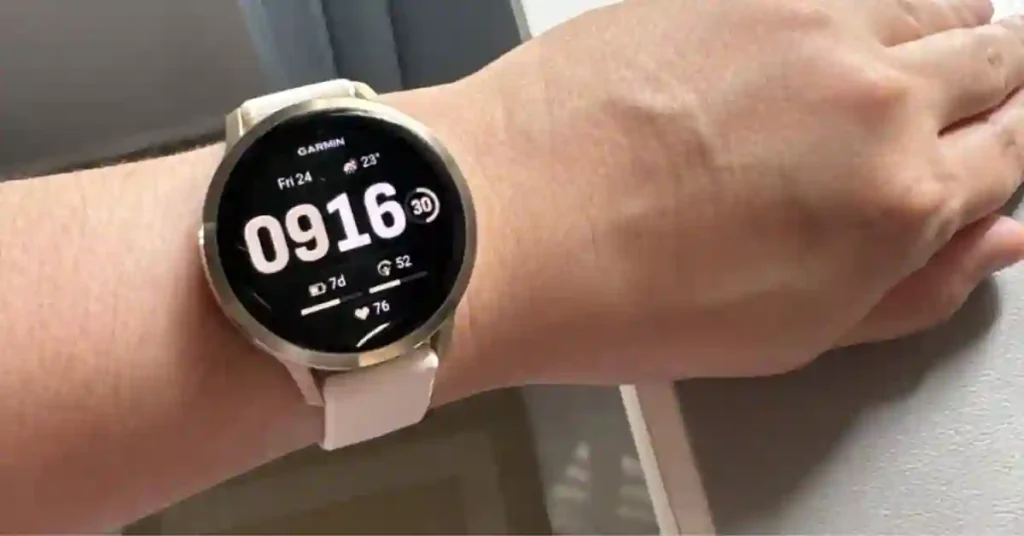
The move to a full stainless steel case is a big upgrade over the Venu 3, which used more plastic and only had steel on the bezel and buttons.
The Venu 4 skips titanium and sapphire glass found on pricier models, but the steel case helps it feel more robust without a weight penalty.
At $550, it sits well below some premium Garmin models, yet above basic fitness watches.
Display Features
Garmin keeps the sharp AMOLED displays from the Venu 3:
- 41 mm: 1.2 inch, 390 x 390 pixels
- 45 mm: 1.4 inch, 454 x 454 pixels
What is new is how you can tune the screen. There are color adjustments, a blue light filter for better night viewing, and color filters to improve visibility for different types of color blindness.
Brightness is improved too, even if Garmin does not list nit values.
The most practical hardware change is the integrated LED flashlight at the top edge. Press and hold the lower button to turn it on. It is great for late-night runs, finding keys, or lighting a dark hallway.

This feature existed on a more expensive recent Venu variant, but it is new for anyone coming from the Venu 3.
New display and hardware perks:
- Color adjustments for accessibility and comfort
- Brighter screen outdoors and indoors
- Built-in LED flashlight for everyday use
Health and Fitness Tracking
Garmin pushes the Venu 4 deeper into daily health, sleep, and recovery while also raising its training ceiling. 0
If you want a balanced Garmin watch that tracks more than workouts, this is where it gets interesting.
Lifestyle Logging Innovation
The headline feature is lifestyle logging. You can record things like caffeine or alcohol intake, or create your own lifestyle factors, then see how those choices affect stress, sleep, and health metrics.
You can log in the app or on the watch. Seeing how a late coffee or a glass of wine changes sleep quality is eye opening, and the trends are easy to grasp.
Sleep Tracking Upgrades
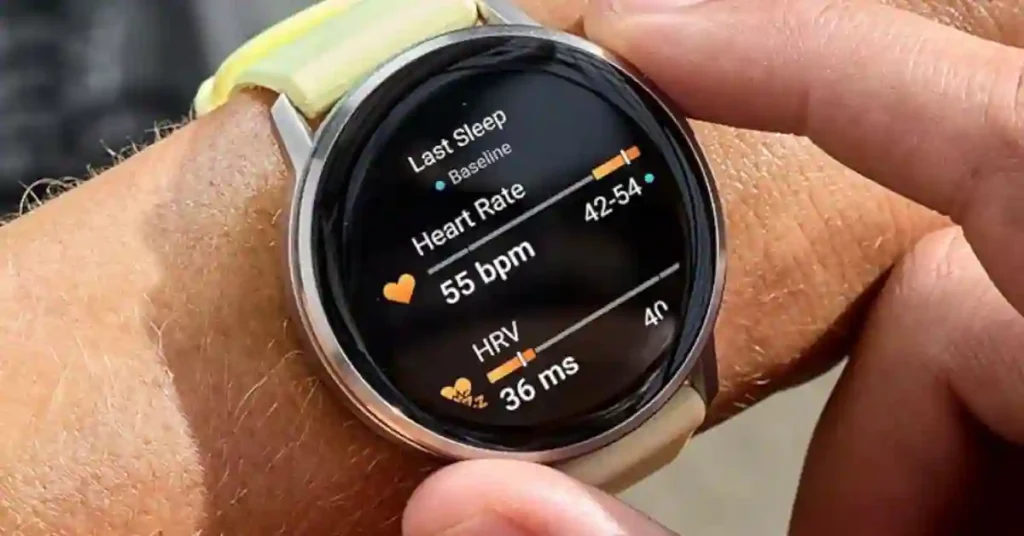
Sleep tracking gets a full refresh. A new circadian rhythm feature checks if your sleep timing matches your internal clock.
It needs about three weeks of your sleep data to build a baseline before it starts guiding you, even if you have history on other Garmin devices.
The smart alarm tries to wake you in a light sleep phase within a 30 minute window, which can make mornings smoother.
A new Health Status view analyzes overnight changes and flags anything out of range. It looks at:
- Resting heart rate
- Heart rate variability (HRV)
- Skin temperature
- Blood oxygen saturation
This can hint at early illness, elevated stress, or recovery needs. It is a simple morning check-in that saves time. The evening report is also new.
It delivers a quick summary of your day at night, while the morning report remains from past models.
ECG is now supported as well. You can take a wrist-based electrocardiogram and record events to share with your doctor if needed.
I have found that a regular sleep schedule pays off, and these tools make it easier to stick with it.
Training Readiness and Metrics
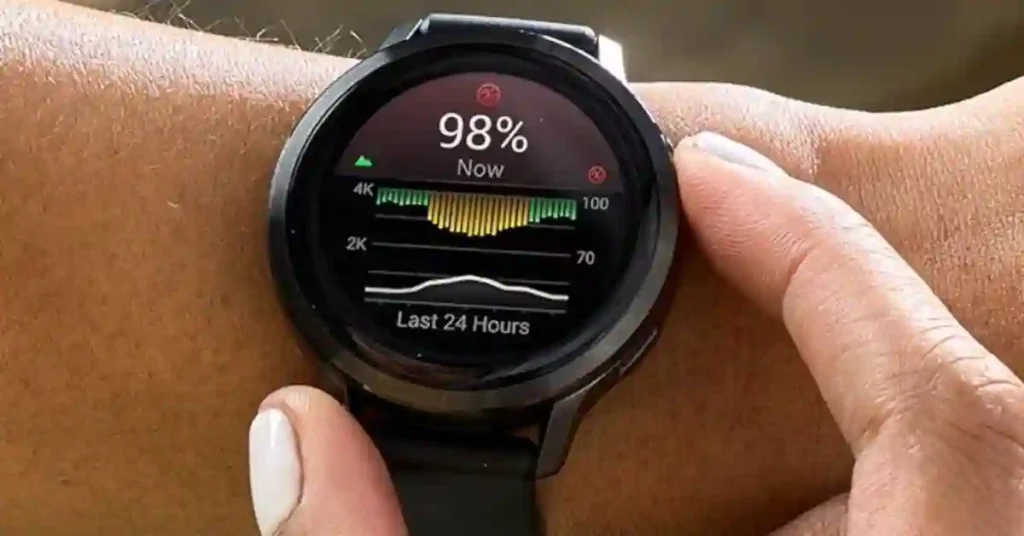
Garmin Venu 4 adds more advanced training context that athletes will appreciate.
Widgets show training readiness and training status, and you can review training load and load focus, split into aerobic and anaerobic buckets. You also get lactate threshold and VO2 max estimates.
After each session, you will see both aerobic and anaerobic training effects, which helps you balance hard and easy days.
The VO2 max estimator performed well in lab tests featured by the creator, which is encouraging if you track aerobic fitness over time.
Workout Suggestions and Coaches
You now get daily workout suggestions for running, cycling, and walking. Garmin Coach is included and has expanded to support strength training along with running and cycling.
There is a triathlon coach, plus a new Fitness Coach that builds personalized plans for more than 25 activities, such as rowing and HIIT.
These recommendations consider your training history, sleep, and recovery, not only your weekly mileage.
Coach options at a glance:
- Garmin Coach for running, cycling, strength
- Triathlon Coach for multi-sport guidance
- Fitness Coach with tailored plans for 25 plus activities
Sports Profiles and Tools
There are many sport profiles, and a helpful new one is mixed training. It lets you combine sports in one session, like a strength block followed by a run, which mirrors events such as Hyrox.
Triathlon is supported as well. As with past Venu models, there are adaptive features for wheelchair users that track pushes and weight shifts.
For racing, the new race widget pulls in your upcoming events from the app and shows weather and predicted finish times. Predictions adjust for distance, weather, and course profile.
Garmin’s PacePro helps you pace hills more wisely. During runs, you can display a recovery timer and grade-adjusted pace. Advanced running metrics include running power, cadence, vertical ratio, vertical oscillation, and ground contact time.
There are still gaps if you want full pro-level metrics. The Venu 4 does not include running tolerance, running economy, hill score, or ClimbPro, and its golf tools are leaner than Garmin’s higher-end watches.
One practical note. The Venu 4 is almost entirely touch controlled. There are only two buttons, and you cannot navigate workout screens with buttons, you must use touch. That can be awkward with sweat or rain.
Smart Features and Connectivity
Garmin kept the smartwatch staples and added a couple of helpful twists.
Core Smart Functions
You get notifications with images, music controls, and about 8 GB of onboard storage for songs and playlists.
The built-in microphone and speaker let you take calls and even listen to music without headphones if you like.
A new accessibility feature can read your watch face data aloud. Voice assistant support remains, and you can use offline voice commands for actions like changing brightness or starting a workout.
There is no LTE or satellite connectivity. You still need your phone for data-heavy features.
Button and Control Changes
There are two buttons now. The Venu 3 had a third center button that many used for shortcuts or quick app access.
Losing that button removes a handy control option, and since most actions use the touchscreen, this change will not suit everyone.
GPS, Navigation, and Accuracy
The good news is strong GPS accuracy with new satellite options. The bad news is the same map limitation that held back the Venu 3.
Navigation Capabilities
The Venu 4 still does not support topographic maps. At this price, that feels like a miss, since many midrange fitness watches now include maps.
You can upload routes, follow breadcrumb navigation, use TrackBack, and get guided back to start. You cannot see a map view or explore nearby points of interest on the fly. If you rely on a map for hiking or travel runs, keep this in mind.
On the upside, the watch adds support for more GNSS constellations, including QZSS and BeiDou, plus full multiband GNSS. In practice, tracking is excellent.
City streets, forest paths, residential areas, and rural roads were recorded with high precision in testing. It matches Garmin’s more advanced watches for GPS accuracy.
Heart Rate Sensor Performance
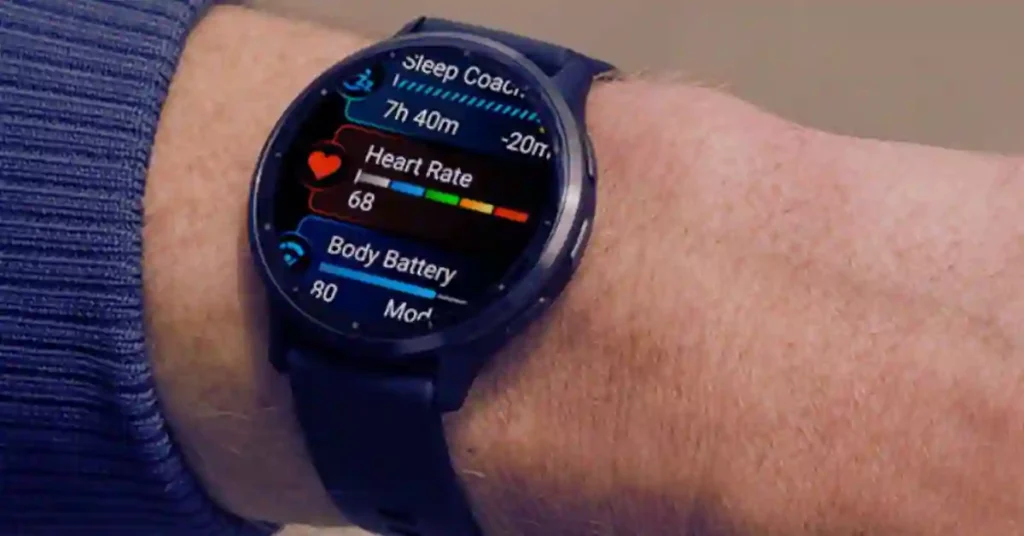
The optical heart rate sensor is the same one used on recent Garmin models. Performance follows the usual pattern:
- Running and cycling, very accurate and close to a chest strap
- Strength training, less accurate with clear deviations during sets
- Team sports like football, accuracy fluctuates but is better than strength work
- Kickboxing, good in large segments, with a few flat spots
For hard-to-track sports with wrist movement or impact, pair a chest strap for best results.
Battery Life and Performance
Battery life drops a little compared to the Venu 3, likely due to new features, but it still outlasts most traditional smartwatches.
Rated and Real-World Battery
Garmin’s estimates are conservative in some cases, and the results vary by size and features used.
- 41 mm: up to 10 days typical use
- 45 mm: up to 12 days typical use
- Always-on display: about 3 to 4 days
- Battery saver smartwatch mode: 18 to 25 days depending on size
- GPS activities: 15 to 20 hours in standard mode
- Multiband GNSS: 12 to 17 hours
Auto Select GNSS is the sweet spot. It switches between standard GPS and multiband as needed, stays nearly as accurate as multiband-only, and saves a lot of power.
The Venu 4 does not support custom activity power modes or an expedition mode.
In real use, the 45 mm model lasted about 7 to 8 days with heavy use, around 10 days with lighter use.
Always-on display cuts that to a few days. During activities, battery drain was better than expected in some sessions. A two hour football session used roughly 3.43 percent per hour in Auto Select, which points to around 30 hours of runtime in that scenario.
With multiband GPS during runs, drain was about 6 percent per hour, which aligns with the 17 hour claim.
Here is a quick comparison of rated figures against the Venu 3:
| Model | Typical Use | AOD Use | GPS Standard | GPS Multiband |
|---|---|---|---|---|
| Venu 3 | Up to 14 days | 4 – 5 days | Longer than Venu 4 in most modes | Not stated for all variants |
| Venu 4 (41 mm) | Up to 10 days | 3 – 4 days | Up to 15 hours | Up to 12 hours |
| Venu 4 (45 mm) | Up to 12 days | 3 – 4 days | Up to 20 hours | Up to 17 hours |
The Venu 4 handily beats an Apple Watch for battery life and sleep tracking. It falls short of Garmin’s big battery adventure watches.
What’s Great, What’s Not
A quick pulse check of the highlights and drawbacks.
- Pros
- Lifestyle logging shows how habits hit sleep and recovery
- ECG, Health Status, morning and evening reports for daily health
- Built-in flashlight in a sleek, lightweight case
- Strong multiband GNSS accuracy
- Expanded training metrics and better post-workout insights
- Daily workout suggestions, upgraded Garmin Coach, and a new Fitness Coach
- Cons
- No topographic maps at this price
- Slightly shorter battery life than Venu 3 in typical use
- Touch-first controls and only two buttons, tricky with sweat or rain
- Missing a few advanced running and golf features found on higher-end models
- No LTE or satellite connectivity
Who Should Buy the Venu 4?
Pick the Venu 4 if you want a stylish Garmin watch that lives on your wrist all day, covers your health needs in detail, and still trains hard on the weekends.
It is a great Apple Watch alternative if battery life and recovery insights matter to you. It is also ideal if you want Garmin’s training chops without the bulk of a Fenix.
Skip it if you need offline maps, long expedition battery life, or advanced training widgets like hill score and running economy.
If you already own a Venu 3, a similar Forerunner, or a higher-end Garmin, the upgrade is not a must unless ECG, the flashlight, and lifestyle logging are high on your list. Many health features may arrive on other models via software updates.
Final Verdict
The Garmin Venu 4 is a well balanced fitness smartwatch that feels more premium, tracks health more deeply, and adds useful tools like a flashlight and ECG.
GPS accuracy is excellent, coaching is smarter, and lifestyle logging connects your habits to your recovery in a clear way. The lack of maps limits it for outdoor navigation, and battery life steps down a bit from the Venu 3.
If you want a daily driver that blends style, health, and training in one device, this Venu 4 hits the mark. Think of it as a strong candidate for “Best Fitness Smartwatch” for most people who train often, sleep with their watch, and value practical smarts.
Have thoughts on this Garmin Venu 4 review? Drop a comment, and if you have hands-on experience, share what surprised you.
If you are shopping now, check current pricing and colors here: Garmin Venu 4 on Amazon.
FAQs for the Garmin Venu 4 Review
How much will the Garmin Venu 4 Cost?
The Venu 4 launched with a price increase compared to its predecessor. You can expect the smaller 41mm model to start around $550 USD, while the larger 45mm model is typically priced just slightly higher. This cost reflects the upgraded hardware, like the new metal case and dual-band GPS.
What is The Battery Life of The Garmin Venu 4?
It offers fantastic battery life compared to most smartwatches, though it’s slightly less than the older Venu 3 due to the brighter screen and more advanced GPS.
The larger 45mm Venu 4 gets up to 12 days in standard smartwatch mode.
The smaller 41mm Venu 4 gets up to 10 days in standard smartwatch mode.
In short, you can go a week or more between charges, which is a huge plus.
Can I make Calls with the Garmin Venu 4?
Yes, you absolutely can! The Venu 4 has a built-in microphone and speaker, so as long as your watch is connected via Bluetooth to your compatible smartphone (Android or iPhone), you can answer calls right from your wrist—perfect for when you’re working out or have your hands full.
Can You Text on Garmin Venu 4?
Yes, you can receive text notifications on the Venu 4. For replying, you have a few options:
Android Users: You can send pre-written quick replies or use the full on-screen keyboard to type a response directly.
iPhone Users: You can use the pre-set quick replies.
You can also use your phone’s voice assistant (like Siri or Google Assistant) through the watch to dictate longer messages.
Does Venu 4 Have ECG?
Yes, the Garmin Venu 4 does feature the ECG app. This allows you to record your heart rhythm to detect signs of Atrial Fibrillation (AFib). Just keep in mind that the availability of this feature can sometimes vary by region, depending on local regulatory approval.
Does New Garmin Venu 4 Have Navigation?
It has excellent GPS capabilities but lacks full, routable on-board maps like the higher-end Fenix or Epix models.
However, the Venu 4 does support course following (meaning you can load a route and follow a breadcrumb trail) and has the new Multi-Band (Dual-Frequency) GPS, which makes its location tracking incredibly accurate, especially in challenging environments like city centers.
What is the difference between Garmin Venu 4 and 4S?
The main difference between the Garmin Venu 4 and the Venu 4S is entirely related to size and battery capacity. The Venu 4S is the smaller, more compact version, featuring a 41mm case and a 1.2-inch display, which is ideal for users with smaller wrists. The standard Venu 4 is the larger model, featuring a 45mm case and a 1.4-inch display. Due to the physical size difference, the larger Venu 4 offers slightly better battery life, typically lasting up to 12 days in smartwatch mode compared to up to 10 days for the Venu 4S. Aside from these physical dimensions and the resulting battery endurance, both watches share the exact same set of features, including the bright AMOLED display, the advanced health and fitness metrics like Training Readiness, built-in flashlight, and Multi-Band GPS support.
Will the Garmin Venu 4 have an improved display?
Yes, the Venu 4 has an improved and brighter display compared to its predecessor, the Venu 3.
Key details about the Garmin Venu 4’s display:
Higher Brightness: The maximum brightness of the AMOLED display is reportedly doubled (e.g., from around 1000 nits on the Venu 3 to up to 2000 nits on the Venu 4), making it much clearer and more vivid, especially in bright, sunny conditions or during outdoor workouts.
Same Size and Resolution: The screen sizes and resolutions remain the same as the Venu 3:
45mm model: 1.4-inch, 454 x 454 pixels.
41mm model: 1.2-inch, 390 x 390 pixels.
Smoother Experience: The Venu 4 also benefits from running on a newer Garmin OS platform, which generally leads to smoother animations and a more fluid user interface.
While the screen itself is brighter, some user reports have noted that the new automatic dimming feature in low light can be slow to adjust, which can be an issue when transitioning quickly from a bright to a dark environment (e.g., running at night).


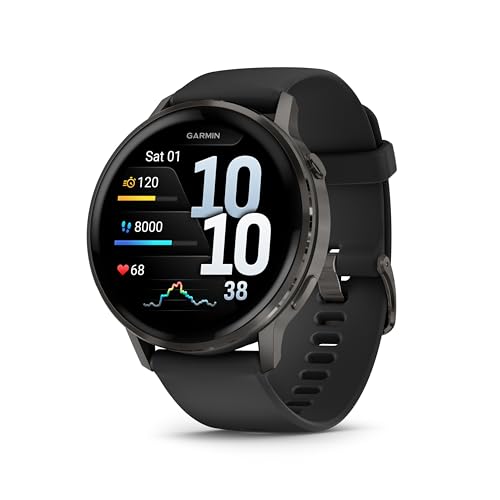

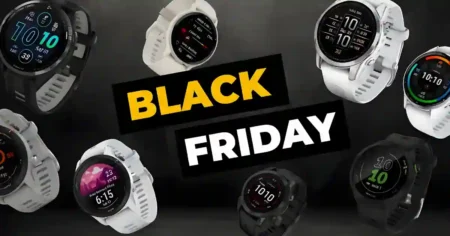


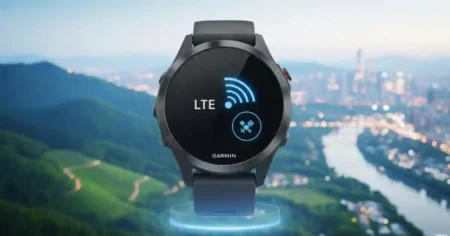
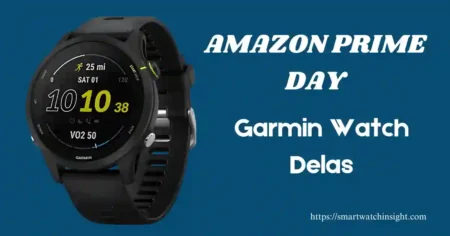
![Get Up to $200 Off During Garmin’s Father’s Day Sale — Shop Now! Garmin Fenix 8 Father’s Day Sale – $200 Off [Limited Time Offer]](https://smartwatchinsight.com/wp-content/uploads/2025/06/Garmin-Fenix-8-Fathers-Day-Deal-–-Save-200-on-Premium-GPS-Watch-450x236.webp)